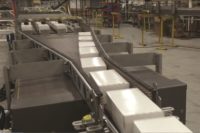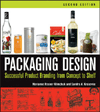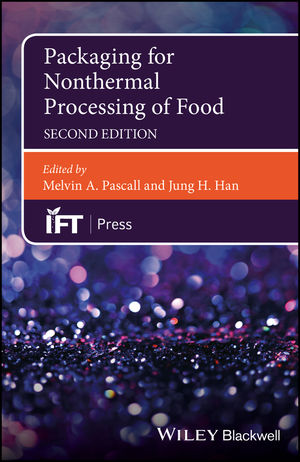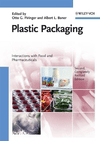A lot of people seem to chase speed in their vertical form-fill-seal machine, and that’s fine. The cycle speed is an important feature to evaluate. But speed is just one factor in determining a machine’s overall effectiveness in snack food packaging applications.
Format, changeover and service also play important roles in packaging operation. When properly synchronized, these four components together will help ensure your machine will meet production goals — and ultimately move snacks off the shelf and into shopping carts.
Format
Presentation is everything, and the ultimate goal is to capture the attention of the consumer. Stand-up pouches have become a go-to choice for many snack food manufacturers due to their attractive presentation. Flexible packaging allows stand-up pouches to be better displayed on shelves with an unobstructed view of the product. When paired with colorful, eye-catching package designs, stand-up pouches stand out when displayed on store shelves.
Now, compare a stand-up pouch to snack food packaged in a round, plastic tub. For starters, you can’t stock nearly as many round tubs on a shelf as you can with a stand-up pouch. And since the tub is round, you lose part of the facing — in other words, the product’s messaging may not be fully received. Also, the material costs for plastic tubs are more than flexible film on a per-item basis, and its circular shape leaves a lot of open, wasted space in cases during shipping — and fewer tubs per case means increased shipping costs.
Another point in favor for flexible packaging is now being seen in two offshoots of the COVID-19 pandemic. As the recent lockdown kept many people inside, we’ve seen a noticeable uptick in sales of snack food packaged in larger, bulk-sized stand-up pouches. This trend seems logical as people looked to limit trips to the grocery store, buying larger packaged items to last longer. But as lockdown orders are now being lifted, some snack food manufacturers are increasing production of individual-portion sized packaging to avoid people sharing with others as a safety measure. For packaging these smaller bags, food manufacturers are employing bag-in-bag applications. This can be accomplished with dual form-fill-seal machines. A forming tube up top makes the individual-size bags, and then they drop into a larger, master bag. These bag-in-bag snack food products are typically sold in warehouse club stores and larger grocery stories.
Changeover
As more regional, niche snack food brands pop up, the forecast for co-packers looks promising. That’s because as new brands get started, they often turn to co-packers to fill their orders. Fulfilling multiple short-run orders means co-packers perform numerous changeovers on their equipment. Being able to run a broad range of dried, salty or sweet snack foods with different films and bag sizes through the same machinery is key to fast, flexible production.
Changeovers used to be a time-consuming endeavor, but not anymore. Well-designed form-fill-seal machines have taken much of the guesswork out of changeovers, and most can be accomplished in less than 10 minutes. Servo-drive technology increases changeover accuracy to 1/1,000 of an inch, automatically making the necessary adjustments. All an operator needs to do is replace the forming tube with the new one and load the correct film. This saves not only changeover time, but money with reduced film waste.
Speed
While some form-fill-seal machines tout speeds up to 200 bags per minute, you really need to evaluate your entire line and determine the actual speed range you need from your machine. To do that, you need to look at the whole picture and know what’s happening to your product before it arrives at the bagger, as well as its destination after it’s been packaged.
If you can accommodate up to 200 bags per minute, servo-driven continuous motion form-fill-seal machines are the perfect solution. The secret to these next-generation machines achieving these rates is a high-speed jaw system that doesn’t stop throughout the cutting and filling process, allowing for maximum dwell time on sealing for faster speeds and accuracy. The continuous-motion design is ideal for films that require longer seal times, such as multilayer laminate, foil-lined films.
If your application is more in the 90-bags-per-minute range, then an intermittent form-fill-seal machine is a good choice. The word intermittent is used to describe the split-second pause in the bag-making process. These machines are tried and true, with years of reliable service to their name. There are several machine styles available to best match your application.
Service
Service is probably the most important of the four components in form-fill-seal machines. Maintaining and keeping your machine running efficiently is one of the more important issues that can affect your production team. Machines that are not maintained or routinely supported by your team can run into issues. And we all know what happens when this occurs — your entire packaging line comes to a quick halt. If that happens, knowing you’ve got someone to back you up is important. How fast can you obtain replacement parts? Are the parts readily available from an industrial supply company, or are they custom-made from your machine’s manufacturer? Hopefully not the latter, as that could take extra time in receiving new parts.
Bottom line is anyone can sell you a machine, but for best results you want to select a partner who will be there for you long after the installation is completed. Do they offer consumable kits to make ordering easy and cost effective? Are they innovative and looking for a long-term customer relationship? The right form-fill-seal machine will produce bag sizes in the desired format, offer fast changeovers, provide the necessary speed, and its manufacturer will be there with you long after the installation is completed. When you have those four components, you’ve got the right combination for a long-term packaging solution and a promising partnership.
Visit matrixpm.com or email Chris Higgins for more information and solutions.









